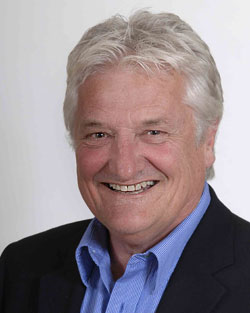 Research supported by Australia’s Pork Cooperative Research Centre (CRC) suggests changes to how sows are managed and mated in lactation may enable a smooth transition from stalls to group housing, without reproductive performance declining.
Research supported by Australia’s Pork Cooperative Research Centre (CRC) suggests changes to how sows are managed and mated in lactation may enable a smooth transition from stalls to group housing, without reproductive performance declining.  Addressing an Animal Welfare Science Centre pig welfare seminar in Melbourne on Friday, July 9, Pork CRC CEO, Dr Roger Campbell said the new technology, developed by Sydney University researchers, formed the basis of a major program in the CRC’s rebid application recently submitted to the Australian Government.
Addressing an Animal Welfare Science Centre pig welfare seminar in Melbourne on Friday, July 9, Pork CRC CEO, Dr Roger Campbell said the new technology, developed by Sydney University researchers, formed the basis of a major program in the CRC’s rebid application recently submitted to the Australian Government.“One of the program’s core objectives will be the development of cost effective management and housing systems that have no adverse effects on reproduction or cost of production, but will improve the welfare of sows and their progeny,” he told about 50 delegates.
The ‘Confinement Free Systems’ program will involve leading international researchers, commercial production companies, animal welfare organisations and food retailers.
Dr Campbell said the pork industry had been challenged by animal welfare advocates, retailers and consumers, particularly regarding housing of sows in stalls and the issue needed to be thoroughly debated and addressed fairly by all stakeholders.
However, simply moving to group housing of sows would not necessarily improve the situation or make the industry more viable, he warned.
“Given the capital costs involved, plus the many unknowns, including the probability of significant declines in reproductive performance, changing housing systems because you are forced to could further hasten the decline of pork production in Australia.”
Although early stage, the technologies, developed with Pork CRC support, suggest sow welfare and productivity can be simultaneously improved.
“The proposed research will enable Australian producers to get ahead of their international competitors, because it’s likely changes to sow management and housing will occur globally and it’s always better to be ahead of the curve than sliding down it,” Dr Campbell said.
“We have the opportunity of leading the world and helping ensure Australian pork producers and consumers are rewarded in terms of profitability and the quality and cost of food available.”
Commencing his address, Dr Campbell said the Australian industry faced increased competition from pork from Denmark, Canada and the USA, with imported pork already representing 70 per cent of all manufactured pork products currently sold in Australia.
“Without improvements in the efficiency of production and cost competitiveness on a global basis, the Australian pork industry is likely to continue to decline in size and, ultimately, face the threat of fresh pork imports, which could devastate producers by slashing their already tight margins and threatening their future sustainability”.
The current Pork CRC has concentrated on improving the efficiency of pork production and the global competitiveness of the Australian pork industry.
“We hope that by reducing the collateral costs associated with pork production that Australian producers will gain market advantages over other meats and those countries exporting pork to Australia,” Dr Campbell said.



